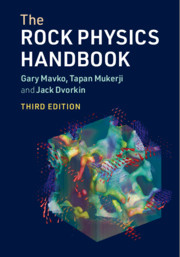Book contents
- The Rock Physics Handbook
- Reviews
- The Rock Physics Handbook
- Copyright page
- Contents
- Preface to the Third Edition
- 1 Basic Tools
- 2 Elasticity and Hooke’s Law
- 3 Seismic Wave Propagation
- 4 Effective Elastic Media: Bounds and Mixing Laws
- 5 Granular Media
- 6 Fluid Effects on Wave Propagation
- 7 Empirical Relations
- 8 Flow and Diffusion
- 9 Electrical Properties
- Appendices
- References
- Index
7 - Empirical Relations
Published online by Cambridge University Press: 05 March 2020
- The Rock Physics Handbook
- Reviews
- The Rock Physics Handbook
- Copyright page
- Contents
- Preface to the Third Edition
- 1 Basic Tools
- 2 Elasticity and Hooke’s Law
- 3 Seismic Wave Propagation
- 4 Effective Elastic Media: Bounds and Mixing Laws
- 5 Granular Media
- 6 Fluid Effects on Wave Propagation
- 7 Empirical Relations
- 8 Flow and Diffusion
- 9 Electrical Properties
- Appendices
- References
- Index
Summary
Nur et al. (1991, 1995) and other workers have championed the simple, if not obvious, idea that the P and S velocities of rocks should trend between the velocities of the mineral grains in the limit of low porosity and the values for a mineral–pore-fluid suspension in the limit of high porosity.
- Type
- Chapter
- Information
- The Rock Physics Handbook , pp. 474 - 524Publisher: Cambridge University PressPrint publication year: 2020
- 1
- Cited by

